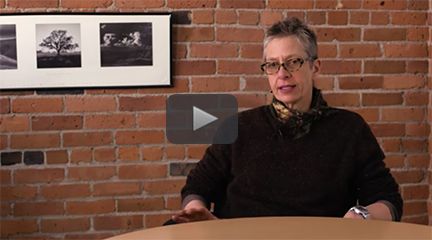Instructor Insights pages are part of the OCW Educator initiative, which seeks to enhance the value of OCW for educators.
Course Overview
This page focuses on the course 5.95J Teaching College-Level Science and Engineering as it was taught by Janet Rankin in Fall 2015.
This participatory seminar focuses on the knowledge and skills necessary for teaching science and engineering in higher education. It is designed for graduate students interested in an academic career, and anyone else interested in teaching. Students research and present a relevant topic of particular interest. The subject is appropriate for both novices and those with teaching experience.
One of the most important findings in educational research is that students learn best by doing. Each class session includes opportunities for students to engage in active learning, small group discussions, and critical thinking. In-class and out-of-class assignments and readings help students develop their own teaching practice.
Course Outcomes
Course Goals for Students
By the end of the semester, students will be able to:
- Describe some of the latest research in STEM (science, technology, engineering, and mathematics) learning in higher education, including research on diversity.
- Apply that research in your own teaching.
- Develop and utilize a set of teaching skills, including: Creating intended learning outcomes; planning and presenting a class; using active learning techniques; and employing feedback to improve your teaching, constructing effective problem set and exam questions, and creating an inclusive classroom.
- Formatively and summatively assess student learning.
- Write a teaching philosophy statement.
Meet the Educator
In the following video, Janet Rankin introduces herself and shares how she became interested in teaching and learning.
Instructor Insights
In the following videos, Janet Rankin describes various active learning strategies and how she engages students in learning these techniques.
- Active Learning Overview
- Active Learning Strategy: Mud Cards
- Active Learning Strategy: Think-Pair-Share
- Active Learning Strategy: Debate
- Active Learning Strategy: Beach Ball
- Active Learning Strategy: Personal Response Systems
- Active Learning Strategy: Lightning Round
- Active Learning Strategy: Jigsaw
Curriculum Information
Prerequisites
None
Requirements Satisfied
None
Offered
Every fall semester
Assessment
The course is Pass/No Credit. To pass the class, students must complete 12 short post-class assignments and participate in class activities (including a microteaching session) and discussions.
Student Information

Breakdown by Year
Mostly graduate students and visiting faculty
Breakdown by Major
Mostly mechanical engineering, electrical engineering and computer science, business, chemistry and chemical engineering
Typical Student Background
Visiting faculty were part of the MIT-Africa Initiative and brought prior teaching experience to the course. A few other participants also had prior teaching experience.
During an average week, students were expected to spend 4 hours on the course, roughly divided as follows:
In Class
- Met 1 time per week for 2 hours per session; 13 sessions total.
- Each class session included opportunities for students to engage in active learning, small group discussions, and critical thinking.
Out of Class
Semester Breakdown
| WEEK | M | T | W | Th | F |
|---|---|---|---|---|---|
| 1 |  |  |  |  |  |
| 2 |  |  |  |  |  |
| 3 |  |  |  |  |  |
| 4 |  |  |  |  |  |
| 5 |  |  |  |  |  |
| 6 |  |  |  |  |  |
| 7 |  |  |  |  |  |
| 8 |  |  |  |  |  |
| 9 |  |  |  |  |  |
| 10 |  |  |  |  |  |
| 11 |  |  |  |  |  |
| 12 |  |  |  |  |  |
| 13 |  |  |  |  |  |
| 14 |  |  |  |  |  |
| 15 |  |  |  |  |  |
 No classes throughout MIT
No classes throughout MIT Class meeting
Class meeting Assignment due
Assignment due No class session scheduled
No class session scheduled Microteaching
Microteaching



 Room 1 of 1
Room 1 of 1 